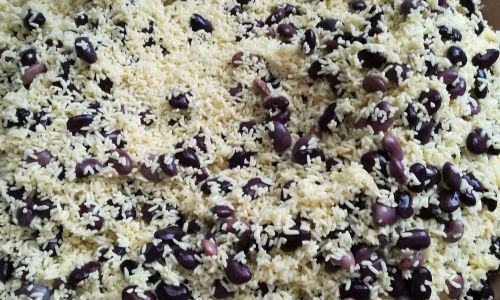Introduction
Abalone stewed with cabbage, a dish that harmoniously blends the briny sweetness of abalone with the tender crispness of cabbage, is a culinary treasure that transcends cultural boundaries. Often associated with fine dining, this recipe demystifies the process, proving that gourmet flavors can be achieved at home with minimal effort. Whether you’re a seasoned chef or a novice in the kitchen, this guide will walk you through every step to create a meal that dazzles the palate and impresses guests. Beyond its deliciousness, this dish boasts nutritional richness—abalone is a prized source of protein, vitamins, and minerals, while cabbage adds fiber and antioxidants. Let’s embark on a journey to craft this timeless dish, where simplicity meets sophistication.
Understanding the Ingredients
Before diving into the cooking process, it’s essential to familiarize yourself with the star ingredients:
- Abalone: This marine snail, often sold fresh, frozen, or canned, is the heart of the dish. Fresh abalone is ideal for its delicate texture, but frozen or high-quality canned varieties work well. When selecting fresh abalone, look for firm, moist flesh with a mild oceanic aroma.
- Cabbage: Opt for a medium-sized green cabbage, known for its sweetness and ability to hold its shape during cooking. Napa cabbage offers a milder flavor, while Savoy cabbage adds a rustic touch.
- Aromatics and Seasonings: Garlic, ginger, and scallions form the flavor base. Shaoxing wine, soy sauce, and a pinch of sugar elevate the dish’s umami depth.
- Broth: Chicken or vegetable broth serves as the cooking liquid, infusing the ingredients with savory richness. For an extra layer of complexity, a dash of oyster sauce can be added.
Preparation: The Foundation of Flavor
Cleaning and Tenderizing Abalone
- If using fresh abalone, gently scrub the shell with a stiff brush under cold water. Use a spoon to pry the meat from the shell, ensuring the dark intestinal tract is removed.
- Rinse the abalone thoroughly and pat dry. To tenderize, lightly score the flesh in a crosshatch pattern—this allows flavors to penetrate and prevents toughness.
- For frozen abalone, thaw slowly in the refrigerator and pat dry before scoring.
Prepping the Cabbage

- Remove any wilted outer leaves from the cabbage. Halve it, core the stem, and slice into 1-inch strips. Rinse under cold water to remove dirt.
- For even cooking, ensure the strips are uniform in thickness.
Mise en Place
- Mince 4 garlic cloves and a 2-inch piece of ginger.
- Slice 3 scallions, separating the white and green parts.
- Measure 2 cups of broth, 1 tablespoon of soy sauce, 1 teaspoon of sugar, and 2 tablespoons of Shaoxing wine.
Cooking Process: Step-by-Step Brilliance
Searing the Abalone
Heat 2 tablespoons of vegetable oil in a Dutch oven or heavy-bottomed pot over medium-high heat. Sear the abalone for 1-2 minutes per side until lightly golden. This step caramelizes the surface, locking in juices and enhancing flavor. Remove the abalone and set aside.
Sautéing Aromatics
In the same pot, add the minced garlic, ginger, and white parts of the scallions. Sauté for 1-2 minutes until fragrant, stirring constantly to prevent burning.
Deglazing and Simmering
Pour in the Shaoxing wine, scraping the pot’s bottom to release browned bits. Add the broth, soy sauce, and sugar, stirring to combine. Return the abalone to the pot, ensuring it’s submerged. Bring to a simmer, then reduce heat to low. Cover and cook for 20 minutes, allowing the abalone to absorb the broth’s essence.
Introducing the Cabbage
Gently layer the cabbage strips over the abalone. Do not stir—this prevents bruising the cabbage. Cover and simmer for an additional 15-20 minutes, or until the cabbage wilts and softens. The cabbage should retain a slight crunch to contrast the tender abalone.
Final Seasoning and Garnish
Taste the broth and adjust seasoning with salt or a splash of soy sauce if needed. For a touch of brightness, drizzle with sesame oil. Garnish with the reserved scallion greens and a sprinkle of white pepper.
Serving Suggestions
This dish shines when paired with steamed jasmine rice or thin egg noodles, which soak up the flavorful broth. For a complete meal, serve alongside stir-fried bok choy or crispy spring rolls. A chilled glass of Riesling or a light lager complements the dish’s richness without overwhelming it.
Tips for Perfection

- Avoid Overcooking Abalone: Overcooking turns abalone rubbery. Simmer gently and test for tenderness with a fork.
- Enhance Umami: Add a tablespoon of dried shiitake mushrooms to the broth for earthy depth.
- Vegetarian Adaptation: Substitute abalone with king oyster mushrooms or tofu for a plant-based twist.
- Broth Variations: For a richer base, use clam juice or dashi stock.
Troubleshooting Common Issues
- Tough Abalone: Next time, reduce cooking time by 5 minutes or use a meat tenderizer before searing.
- Soggy Cabbage: Add cabbage later in the cooking process or increase heat slightly to evaporate excess moisture.
- Bland Flavor: Ensure the broth is adequately seasoned and consider adding a splash of fish sauce or mirin.
The Science Behind the Flavors
Abalone’s unique flavor comes from its diet of seaweed and algae, imparting a subtle brininess. Cabbage, when slow-cooked, undergoes caramelization, converting natural sugars into complex sweetness. The combination of ginger and garlic not only seasons but also aids digestion, making this dish both indulgent and nourishing.
Cultural Significance
In many Asian cultures, abalone symbolizes prosperity and is reserved for special occasions. Stewing it with cabbage reflects resourcefulness—transforming humble ingredients into a feast. This dish’s enduring popularity lies in its balance of luxury and simplicity, a metaphor for life’s contrasts.
Pairing with Beverages
- Wine: A crisp Sauvignon Blanc or a floral Gewürztraminer cuts through the dish’s richness.
- Tea: Jasmine or oolong tea provides a refreshing palate cleanser.
- Beer: A light pilsner or wheat beer enhances the dish’s savory notes.
Leftovers and Storage
Store leftovers in an airtight container for up to 3 days. Reheat gently on the stovetop, adding a splash of broth if needed. The flavors often meld beautifully overnight, making leftovers a delightful treat.
Conclusion
Abalone stewed with cabbage is more than a meal—it’s a celebration of culinary synergy. By respecting each ingredient’s role and adhering to simple techniques, you unlock a dish that feels both timeless and effortless. Whether you’re hosting a dinner party or craving comfort food, this recipe delivers. So, gather your ingredients, embrace the rhythm of the kitchen, and savor the joy of creating something extraordinary from the ordinary. Your taste buds—and guests—will thank you.





0 comments